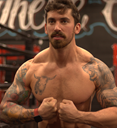
Guest Blogger: Matthew Collins
Sore two-days after your last workout? Delayed Muscle Onset Soreness (DOMS) is that itch that you can’t scratch… that sensation you get for the next few days after a seriously hard workout. That feeling novices fear and experienced trainees relish.
But is it actually a good thing? Does it prove a good and effective workout was had? If there isn’t any soreness following a workout, was it all for naught?
Personally, I kind of love being sore.
It most certainly tells me that I put in the effort and crushed that previous workout. It tells me I didn’t dial-in the previous workout and my intensity is up there. And I like to lift intensely.
But this comes with an asterisk almost every single time because the presence of soreness doesn’t equal efficiency in our program or our effort.
But let’s backtrack a bit here…
What is DOMS?
Delayed Onset Muscle Soreness. The following 2-4 days after a workout (hence the ‘delayed’) you feel soreness ranging from light to debilitating and soul crushing. What would be an example of ‘soul crushing’? It’s hard to walk up or downstairs, it is hard to type, it is hard to get in or out of the car because all your muscles hurt.
When does this happen? What environment needs to be present in order to feel DOMS?
- If you are a new trainee, you’ll almost certainly feel soreness after working out. Typically you should bank on feeling sore for the first few months of your fitness journey.
- It also comes about when a more advanced trainee starts a new program – thus imparting new stimuli onto their body. The soreness is telling us “ahh I see you switched things up there… you got me good” (A good reason to take that first week slow and feel it out).
- Another sure fire way to feel extra spicy is to accentuate the negative, or eccentric range of motion. This is the lowering or lengthening phase of a movement.
Think lowering a barbell after curling it up or descending toward the ground on a Romanian Deadlift. The more the stretch is emphasized, the more the body will feel that stimuli and will be more “activated” or engaged. That part of the movement is the most damaging to the tissues and will lead to more soreness later on.
When is DOMS a Warning?
The thing you need to watch out for, however, is soreness that lasts too long in duration, comes about too frequently, and soreness that is too intense.
Duration: If you have a killer leg day and you are still sore a week later – you’re doing it wrong.
Frequency: If you are sore all the time, week after week – you’re doing it wrong.
Intensity: If you are so sore that you can barely move – you’re doing it wrong.
Again, soreness isn’t necessarily a bad thing, but these factors can give us information about how things are going awry.
You Can Only Workout as Hard as You Can Recover
Most of us have different rates of recovery. Some of us are natural freaks who can take anything given to them, chew it up, spit it out and ask for seconds.
Others look at weights and get fatigued.
Because of these differences from person to person, training programs needs to change accordingly.
10 sets of 10 at 90% RPE will be fine for someone who’s got 10 years under their belt lifting intelligently.
10 goblet squats with 10lb might be a soul crusher for someone who’s never lifted a weight in their life and has spent the last 10 years sitting at a desk.
Context is everything. If you are sore for this long, you potentially need to get certain things in check, which I’ll touch on in a moment.
The same goes for frequency and intensity. If these factors are skyrocketing week after week, something has to be adjusted.
Soreness is typically a result of inability to recover properly. To get the most rewards out of your fitness workout, you need to recover properly. Are any of the items on this list preventing you from recovering well after your workouts?
- Are you sleeping enough?
- Is your sleep quality awful (not long enough, for example)?
- Are you eating to sustain desired results?
- Are you drinking enough water?
- Are your workouts way too hard for your current abilities?
- Are you working out too frequently?
- Are you working out too infrequently?
- Are you too stressed?
- Are you implementing too many intensity techniques such as slow negatives, supersets, giant sets, etc. and not enough of the basics?
And the thing is, when you listen to your body, you’ll see better results. Progress happens when you leave the gym. When you recover. When your body heals and adapts. If you’re never recovering, you’re never growing optimally.
When I dialed things back a tad, started to prioritize nutrition and hydration, and implemented recovery techniques such as walking, yoga, breathing, mobility and other things of the like my body started to behave a whole lot more.
I’m sure yours will too.
As a side note, if you DO have a case of the DOMS in the short term… do an extra-long warm up and get the blood flowing before a workout. Blood is a nutrient transporter and can help the healing process. It’ll also reduce the “sensation” of soreness so you can get a workout in. If you are in the “fall down on the toilet” phase, opt for another body part until you’re recovered.

Matt Collins leads The Fitness Accelerator. Learn more about Matt and his programs here www.dreambodyaccelerator.com
